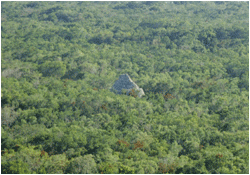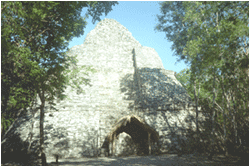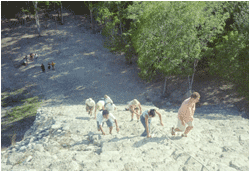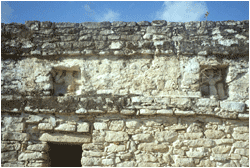

 |
Cobá was a thriving city from around A.D.600, although it had been settled for around a thousand years before this date. It was an important northern lowland city from the Late Preclassic Period until the Late Postclassic Period. It has controlled one of the largest Mayan territories. The ruins of this large city rise through the jungle making it difficult to unearth most of the edifices. Only a small fraction of the many structures in this vast site have been excavated. Cobá's name means "ruffled waters", derived from the five lakes in the vicinity, and is one of the oldest Mayan settlements on the peninsula. There is a Ball court in Cobá. (See Chichén Itzá) |
Inscribed stelae have been founded in Cobá. The stelae are large upright stone slabs which have drawings and glyphs. Stalae depict important events like marriages, wars, etc. |  |
 |
The most stunning find at Cobá was its elaborated grid of elevated “sacbeob” (“white roads”) that spread from the city in various directions. Researchers have counted more than 50 well built roads totaling almost 100 miles. A recent discovery found one of 300 miles. They are generally 10 to 15 feet wide and between a foot and three feet high. The sides were built up with stones and cemented with lime, and the surface was plastered for smoothness and durability; archeologists estimate that a total of 1.5 million cubic feet of stones went into the entire network. Their purpose is puzzling as this civilization had no wheeled transport. But they may have been built for overland trade, for military or religious processions and pilgrimages, or as physical manifestations of political ties between allied cities. |
Nohoch Mul
|  |